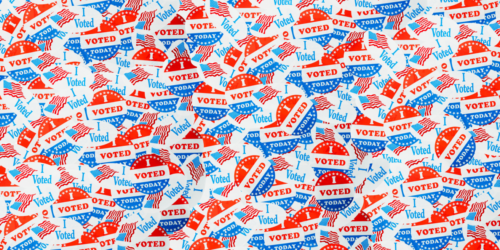As the dust settles from the U.S. presidential election, the American public can celebrate that the election process was largely nonviolent and smooth. However, it is important that the public not be lulled into thinking this signals the end of election administrators’ problems. Such an assumption not only shortchanges the efforts of the millions of people who worked so hard to ensure a safe and effective voting process, but also diminishes the ongoing and emerging challenges to election administration we now confront.
To fully appreciate these challenges, Americans need a clearer understanding of the crucial role election administrators play in our country: they are front-line workers for democracy. If they ever were just “administrators,” those days are long gone. Today, their job is to oversee and manage a complex web of demands and responsibilities requiring a network of partners, a broad skill set, and deep expertise. All their tasks must be conducted in an unimaginably tense environment, where democracy itself is in danger and individuals face frequent personal threats.
Consider the extraordinary lengths election administrators and the army of people supporting them went to between 2020 and 2024 to ensure the integrity of our elections. Most of these activities were not within their portfolio until just a few years ago. Additionally, those that had originally fallen under their purview had to be executed with unprecedented levels of care, coordination, effort, and attention.
Most obviously, even in the face of too few resources and unbearable tension, election administrators successfully implemented the mechanics of the election — setting up polling places, sending out mail ballots, recruiting and training poll workers, counting ballots, and the like. However, this is just a smattering of what election administrators and their partners became responsible for this time around.
In the lead-up to the election, concerns about potential violence against election officials, poll workers, and even voters garnered national attention. To ensure the safety of election administrators, civilians, and the voting process itself, local officials teamed up with law enforcement agencies as part of their election-related duties, implementing precautionary measures at election sites, such as panic buttons and bulletproof glass.
Achieving this level of security was no small feat. Election officials now work with law enforcement on a day-to-day basis rather than just on Election Day. This includes scenario planning, logistical coordination. These regular collaboration efforts underscored the need to solidify a formal partnership, which led to the creation of the Committee for Safe and Secure Elections (CSSE), a bipartisan group of election administrators and law enforcement officials focused on training law enforcement and providing a space for more meaningful teamwork between the two entities.
In its mission statement, the committee says, “CSSE believes that democracy — and the people who administer democracy — need support and protection from intimidation and violence. … While law enforcement and election administrators have distinct roles to play in defending elections, we believe that close coordination is mutually beneficial to further strengthen our democratic institutions.”
Election officials also joined forces with intelligence agencies, particularly the U.S. Cybersecurity and Infrastructure Security Agency (CSIA), to combat the heightened concerns of cyberattacks at polling locations. These efforts were so successful that the director of CSIA stated, “State and local election officials across the country have made big improvements to strengthen both physical and cybersecurity at polling and voting locations to preserve election integrity.”
Most election administrators oversee voter outreach and education every year, but this year saw unprecedented efforts in many places, especially those with high concentrations of election skeptics. The most embattled election officials, such as Secretary of State of Pennsylvania Al Schmidt, made countless public appearances to explain the process and increase trust in the elections. It wasn’t just what they said that drove people to the polls; it was the ways they showed up. These administrators showed themselves as human beings, speaking to audiences full of disengaged voters. The public bore witness to the fact that these were committed, honest public servants, working tirelessly to implement an election voters could have faith in.
Transparency became the catchword of election administration. This time, officials were determined to show people how elections work firsthand to assure them that everything was being done honestly and efficiently. For example, some built election facilities with windows so people could observe the process in person through the glass. Others livestreamed different parts of the election administration process, including ballot collection and counting. Stephen Richer, county recorder in Maricopa County, Arizona, started giving group tours of the ballot processing facilities months before the election.
To reach beyond their familiar constituents, election administrators worked with the press — even when it was uncomfortable and the exposure could increase threats to them. While they were understandably cautious about talking to reporters, election officials welcomed them in order to educate new audiences on ballot casting and other election mechanics.
As part of their role as educators, election officials also needed to leverage social media to disseminate factual data, educate voters (especially young ones), and combat disinformation. The U.S. Election Assistance Commission supported this effort by disseminating a social media toolkit to local officials across the country. Increasingly, election administrators must also understand the potential uses and abuses of AI, one of the many emerging technology issues that election administrators must continually become educated about.
Ultimately, election administrators’ scope of responsibilities has been blown open; they now need many more skills and a lot more expertise. They are not just accountable for effectively implementing the mechanics of elections; now, they must work with law enforcement and intelligence agencies to protect themselves and others from violence and cyberattacks. Many who never expected or wanted to be in the spotlight must put themselves in the public eye, often facing people who challenge their ability and integrity. They must develop and manage communications strategies to engage the press with strained staff capacity, and they must learn to effectively use social media, including as a method for fighting disinformation.
Election administrators wear a million different hats, all while being dramatically under-resourced. Though a handful attempted to derail the legal and fair implementation of the election, the overwhelming majority deserve greater institutional and public support going forward to maintain the level of excellence we saw in 2024. It is of supreme importance that we recognize the thousands of election administrators who fought over the last few weeks, months, and years to make this election safe and fair. They are the heroes of democracy.
This will not be the last time that election administrators will be expected to deliver this level of energy, resources, and thoughtfulness to effectively run elections that people believe in. This is the climate in which we live — one where election administrators are expected to play a central role in rebuilding trust in democracy. The challenge now is to learn from this election, build on its successes, secure the necessary resources and support election administrators need to be ready for future unknown threats and complications, and develop an election administration infrastructure built to handle the complexity of the work and resilient to current and future threats.
Tova Wang is the Director of Research Projects in Democratic Practice at the Ash Center. A longtime leader in election reform and increasing political participation among marginalized groups, she previously directed policy and research at the Center for Secure and Modern Elections and authored The Politics of Voter Suppression.
The views expressed in this article are those of the author alone and do not necessarily represent the positions of the Ash Center or its affiliates.


